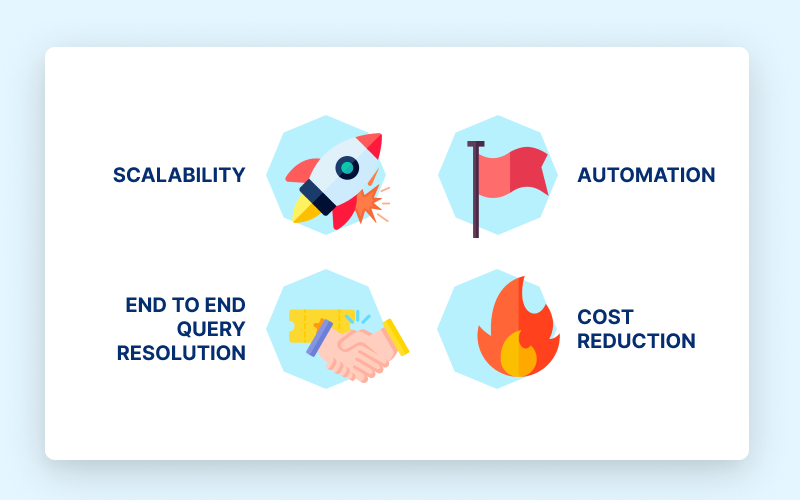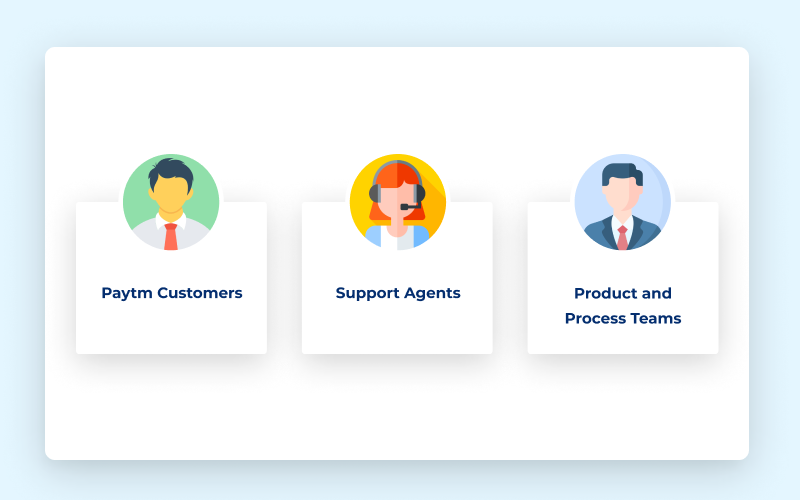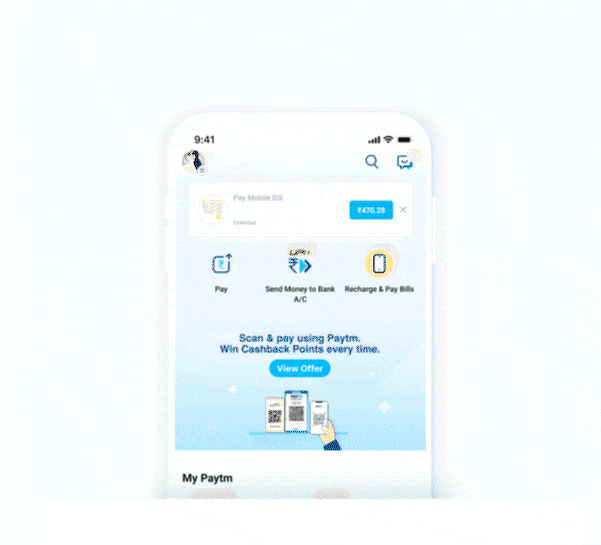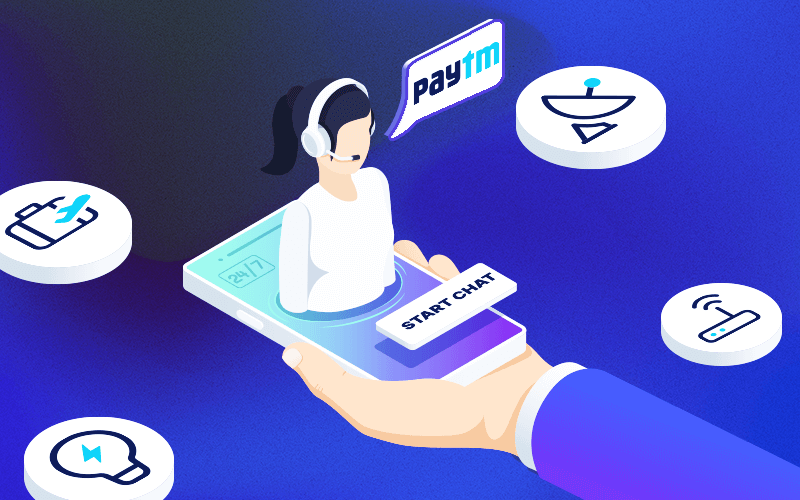How we instated bots to make customer support scalable
For a company the size of Paytm, it is obvious that we need more than just humans to take care of queries. Hence, sometime last year, we embarked on the uphill task of putting together such a solution for a more than half a billion strong user base.
In the previous flow, the customer support window had half a dozen predetermined options from which the user chose the most applicable option. These were generic options, and each one of them had another subset of options. There were just two levels of questions before the query went to a human agent.
For example, Mohit faced a problem while recharging his mobile phone . When he went to the customer support window, he would be faced with two options of what his issue could be. He would choose one of them, followed by the resolution If he wasn’t satisfied, the agent would take over from there. Hence, after just two levels, we had a ticket on our hands.
This was cumbersome and limited. Most queries had to be ultimately resolved by the agent, and the choices given in the previous system served little purpose besides basic segregation of queries.
Paytm’s foremost goal is to be so seamless that you never have a problem with the app. But in the few times that it happens, we wouldn’t want our users to spend hours explaining their issue at length over chat to multiple agents. Instead we’d want it to be solved with the least amount of friction and minimal to-and fro.

With this larger goal in mind, and with our user base growing at a fast clip each month, it was time we found a scalable solution that could deliver on the promise of quick and easy resolution and avoid the aforementioned situation. We envisioned a solution that stood on the following key legs:
- Scalability
- Automation
- End to end query resolution
- Cost reduction
In January this year, we went back to the drawing board to find a solution that embodied these fundamentals. Enter, your personal Paytm Assistant.
Let’s get the “bot” rolling
- Defining our user
We had to solve for three types of users – customers, agents, and product/process teams. Why the customer is self explanatory. They are the reason why the customer support division exists.

For agents, we needed an aide that takes their productivity to the next level. These agents are, after all, human, and prone to error and delays. We needed a tech framework that minimised chances of error while easing the conditions of their work.
For product teams, we did some moonshot thinking. Paytm, as an organisation, is changing every week. We launch new verticals at regular intervals, and our universe of tasks that can be down on the app is always expanding. Which means the customer support has to be agile enough to accommodate this expansive domain. Can the same understructure help our product and process teams to configure bot journeys for every new use-case we add? We knew we could make it work.
- Choosing the bot
The next task ahead of us was deciding what kind of bots to deploy across the organisation. Presently, there are two kinds of bots adopted in the industry: a) conversational AI-based, and b) rule-based.
To understand an AI-based conversational bot system, think of how Alexa understands your commands. The system catches certain phrases from sentences in the query, and pulls up relevant information pertaining to it. For example, if a user says “why is my order delayed?” or “where is my order?”, the system will pick up the word order and pull up information from the user’s purchasing history.
But this was ill-suited for a company like Paytm that deals with tickets of high monetary value. AI-based chatbot systems have an accuracy rate of 60-70 per cent, and it goes down even further if we account for the multitude of vernacular languages in India. Every single day, Paytm logs millions of transactions, and these could be as low as INR10 to even a couple of lakhs. Since every such deal is important to us, we can’t afford to let a work-in-progress system make a mistake while handling this humongous volume and still ensure the best interests of our users. Moreover, it was impossible to train the bot on 20 different languages and while remaining glitch-free.
Hence, we zeroed in on rule-based chatbots – proven, and trustworthy route to building an automated chat support system that let us have better control over every step of the customer support journey.
- Defining flows for every query
Once the decision was made, we entered the implementation stage. This chatbot system requires multiple rules to be defined at each stage of the customer support flow.
Here’s an example: User A goes to the customer support window and selects the last placed order. This is cue for the system to show the user the often-asked questions. Let’s say the user has a query regarding his delivery status and selects “where is my order?” option. According to the rules that we set, this is another cue for the system to show where the order is in the journey. There will be different rules set for delivered and pre-delivered orders. Now according to the option A selected, the system will check with the backend and show the user the option to track the order in real-time – all in a conversational manner without a human involved.
In this way, we can create multiple rules in an infinite flow of conversation, while earlier we were limited to just two levels before the query went to a human agent. This also helps us filter the queries that need human intervention and reduce their quantity significantly – saving up on both time and resources.

(Image: GIF of the user journey to the bot – Attached in the submission and email – Filename: Paytm Assistant GIF.gif)
There are innumerable tasks that can be done on the app – ranging from mobile recharge to buying mutual funds. Every task talks to multiple divisions within the Paytm umbrella. For a bot to provide a practical solution to a query, each of these parts within the company have the ability to talk to each through a common API gateway that is easily accessible through the bot.
- Futureproofing customer support
Considering this wide (and getting wider!) range of tasks, it may seem a daunting task to have to build these many rules for every single query that a user may have, but our years of being in operation held us in good stead. This was not built from scratch, we built on the scores of queries we had accumulated over the years. This comprehensive database served as the foundation on which we added multiple levels and layers of “conversational” elements.
But it wasn’t as easy as piggybacking on old repositories. It was important for us to get the “voice of customer” with utmost precision. This meant that we capture and factor in multiple components to make the decision tree. Is the question regarding an order or a general query (like KYC not going through, etc) ? Where is the user in the order journey? How severe is the nature of the problem?
This also helped us build a feedback loop that works to make the system better equipped to guide the user towards a solution.
In fact, every invective or complaint a user writes on the chat window is segregated and analysed by us to make the system more efficient. This collection of bad ratings and critique is gold for us because it makes us plug the cracks we might have missed.
- More agency for agents (and beyond)
The same bot architecture works on the agent side as well. It’s natural for a human agent to sometimes not have the exact solution to a user’s problem. In these cases, the bot infrastructure works to help solve the agent’s predicament. Like an assistant to the agent, the bot does the legwork of getting all information in one place for the agent to make decisions quickly.
Why is this cool? Queries that took ages can now be solved in under a minute.
Agents are better at their jobs and solve queries faster.
The same goes for our internal teams, who are now able to set up customer support for our new launches within days. Once the user journeys are defined, the configuration of the bots don’t take much time. For example, we were able to set up bots-enabled customer support for our hotel booking vertical in three days flat.
Putting our learnings to work…
The bot system has managed to improve customer experience on multiple fronts – our customer satisfaction score is better and resolution time has lessened. A deflection rate analysis shows that more users are now satisfied with the bot’s solution and never reach the agent handoff step. In fact, nine out of ten queries are now solved by bots post the implementation.
For users, the conservational experience is easier than going through a drab IVR-like experience on the app. All this at one-tenth of the cost. For Paytm, both backend and product teams have automated away solvable problems and now have more leeway and resources to solve higher issues. This allows us to have more extensive flows on the bots through automations in the future, and also design products to include instructions that preempt the queries and solve issues without needing the bot’s support.








